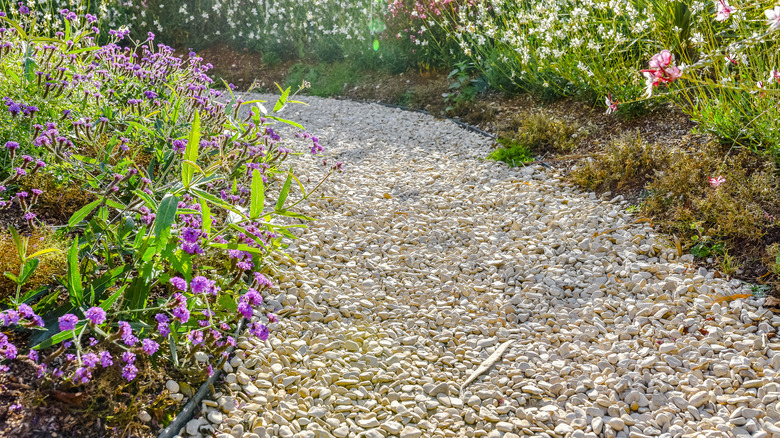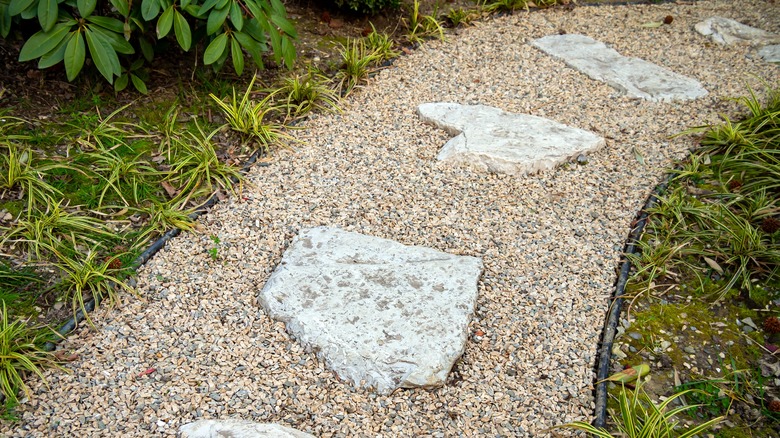Gravel Vs Rocks: Which Is Best For Your Garden And Yard Paths?
Gravel and rocks can be used to add color and texture to your landscaping, are usually affordable, and can often be laid as a DIY project, so you save even more money. These paths are extremely durable, and if you use landscape fabric as an underlay to combat weeds, they are also low maintenance (although you may want to try a natural alternative).
Both materials can be used in a multitude of designs and can offer tremendous visual appeal, as well as allowing people to get around the garden without damaging lawns or planting. However, each has different benefits. Gravel is usually smooth, having been taken from quarries or riverbeds where it was worn down by natural erosion. This can make it the best choice for comfortable walking, as crushed rock tends to be sharp.
Rock might be better in terms of versatility and solidity. There are many things called rock used in landscaping, from pebbles to crushed stone, lava rocks, and large boulders. Clearly, some kinds of rock aren't appropriate for paths, but the choice is more extensive than with gravel. Before deciding which is best for your garden and yard paths, it's useful to understand how gravel and rocks impact what you have planned. Let's look at each material in more detail.
The pros and cons of gravel for your pathways
Although it may not offer quite the variety of rock, there are still quite a few types of gravel to consider, each with its own look and feel. It is a budget-friendly choice and relatively easy to work with. Perhaps the main argument for choosing gravel is that, being smooth, it's better to walk on. Although gravel can be ordered in pieces up to 4 inches in diameter, experts suggest ⅛ inch to ⅜ inch as ideal for pathways, providing the best surface underfoot.
The rounded edges of gravel can mean it doesn't compact as firmly as some types of rock. This has benefits and drawbacks. On the one hand, it means better drainage, but it can also mean the surface can shift fairly easily, particularly if it's several inches deep, as often recommended. It may not be the ideal solution for those who experience difficulties with balance. It's also a good idea to think about some kind of material for the path edges. If gravel is left uncontained, it will tend to work its way into the lawn or flower borders and will need to be topped up regularly.
Why rocks could be the better pathway option in your yard
As you've probably guessed, crushed rock and gravel are sometimes confused, which is understandable when you can buy rocks in the same sizes as gravel. Rock can be used in a similar way and often compacts better to form a more solid surface that is also better at preventing weed growth. Unfortunately, this compaction can mean it doesn't drain as quickly as gravel.
However, the term "rocks" can also mean a wide variety of slabs, cobblestones, etc., in differing sizes, colors, and textures. These can be butted together to form a continuous flow or spaced to create stepping-stone-style pathways. Plus, they can be matched to existing patios or stone retaining walls that can look amazing in your yard.
Of course, there's no reason you can't combine the two, which offers a whole bunch of different design opportunities using larger slabs of rock for the main structure with a gravel infill, or mixing gravel and crushed rock for a checkerboard effect. In truth, there isn't a clear answer to the gravel vs rock question. Depending on your tastes, either one could offer the opportunity to create the perfect paths for your garden and yard.


